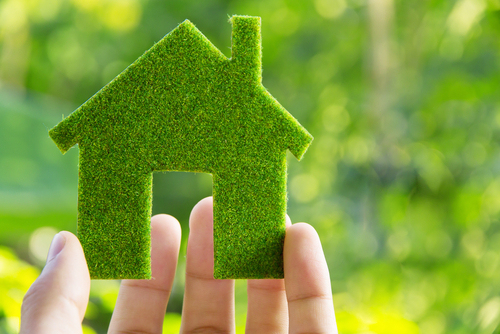By Sophie Hahn
 Berkeley’s buildings may soon go green — Deep Green. The Berkeley Zero Net Energy++ Working Group has drafted a proposal that, if adopted, will make Berkeley’s Building Code a model of green, low-toxic, sustainable building practices. This group of green building activists and professionals — co-convened by climate activist Brian C. Harris, Sierra Club Northern Alameda County Group Executive Committee member Sophie Hahn, and Green Architect Cate Leger of Leger Wanaselja Architects — recently published a report that details an ambitious path to a more energy efficient and environmentally friendly Berkeley Building Code.
Berkeley’s buildings may soon go green — Deep Green. The Berkeley Zero Net Energy++ Working Group has drafted a proposal that, if adopted, will make Berkeley’s Building Code a model of green, low-toxic, sustainable building practices. This group of green building activists and professionals — co-convened by climate activist Brian C. Harris, Sierra Club Northern Alameda County Group Executive Committee member Sophie Hahn, and Green Architect Cate Leger of Leger Wanaselja Architects — recently published a report that details an ambitious path to a more energy efficient and environmentally friendly Berkeley Building Code.
Berkeley Deep Green Building has five goals:
- Zero-net-energy building at the individual building and community scale
- Reducing embodied energy in building materials and practices
- Reducing toxicity in building materials
- Sourcing sustainably produced materials from fair trade, fair wage, and culturally and environmentally friendly suppliers
- Conserving water
This effort is timely in light of heightened climate change concerns and the surge in new construction and remodeling in Berkeley. While Berkeley has made progress in reducing greenhouse gas emissions (GHGs), it is not on target to meet overall reduction goals for 2020 or 2050. Berkeley Deep Green Building will help the City to achieve these goals and other environmental and health benefits.
Buildings contribute close to half of Berkeley's GHGs and more than 60% of this energy use is from fossil fuels. To meet GHG reduction goals, energy use must drop dramatically with a shift to clean, renewably generated electricity. With efforts already underway to shift Berkeley’s electricity sources to 100% renewable energy through the pending Alameda County Community Choice energy program, it is essential that buildings quickly shift from a combination of gas and electricity to 100% electric.
Berkeley’s Deep Green Building proposal is a comprehensive green building program. It has two levels of excellence, both voluntary and incentive-based. It addresses toxicity and the carbon footprint of materials, encouraging the use of materials with low embodied energy like wood, stone, and salvaged items and moving away from materials like plastic, fired clay, and concrete. Using low-embodied-energy materials reduces GHGs now, when these changes will have the greatest impact.
Berkeley Deep Green Building sets specific standards to avoid worst-of-class toxic chemicals. Additionally, it provides for comprehensive post-construction performance monitoring, greywater reuse, and rainwater collection.
Finally, Berkeley Deep Green Building incorporates regular revision and updating into the program, allowing for adoption of new green technologies as they emerge.
Berkeley Deep Green Building compliments BESO (Berkeley's recently enacted Building Energy Savings Ordinance) and State codes and programs including Title 24, Energy Upgrade California and the California Advanced Home Program. Since Berkeley Deep Green goals are tied so closely to California’s long-term energy goals, projects would be eligible for a number of energy efficiency incentives already offered by the State and PG&E.
Berkeley Deep Green Building is a comprehensive effort to lead the State in adoption of best practices for green, zero net energy, sustainable, low-toxic and responsibly-sourced building. It ensures that Berkeley residents will continue to move powerfully toward a more sustainable and cleaner future, enjoying the health and cost benefits of green building technologies.
The proposal will be heard by the Berkeley City Council at its first meeting in the fall.
Email Brian C. Harris at brian@znewg.org for a copy of the proposed Code. Contact architect Cate Leger at cate@greendwellings.com with technical questions.